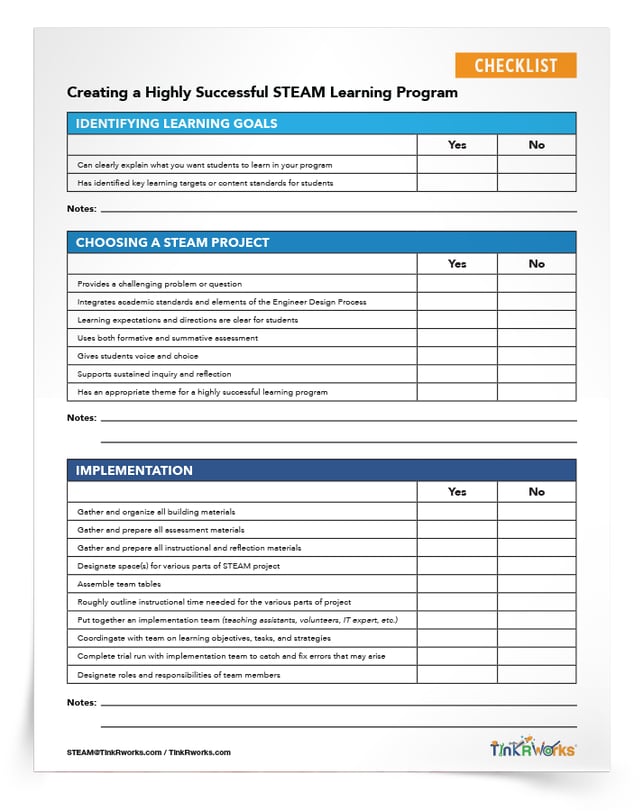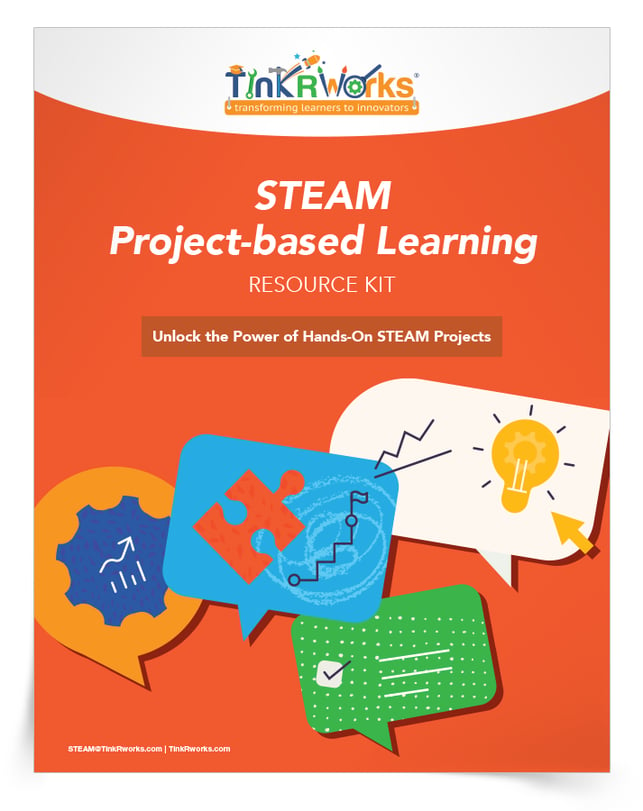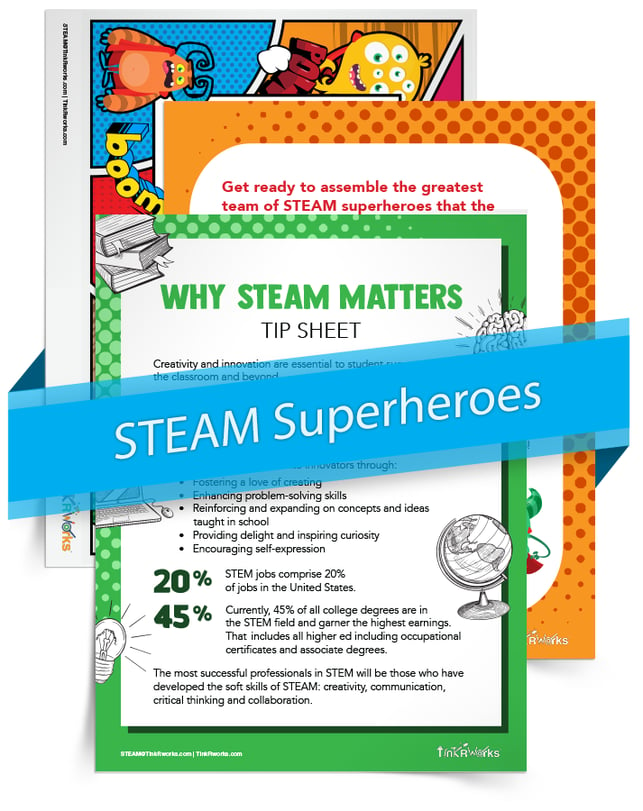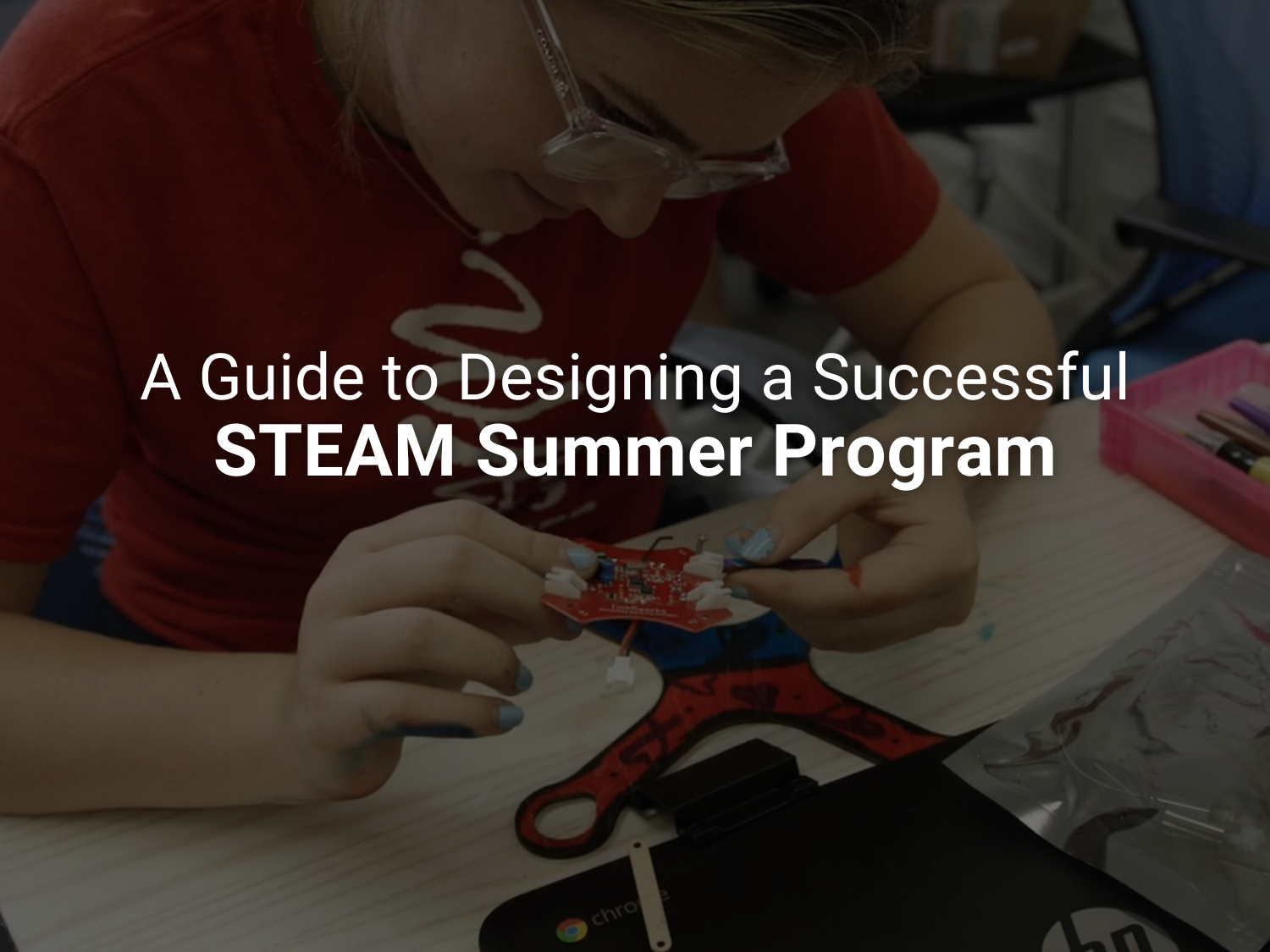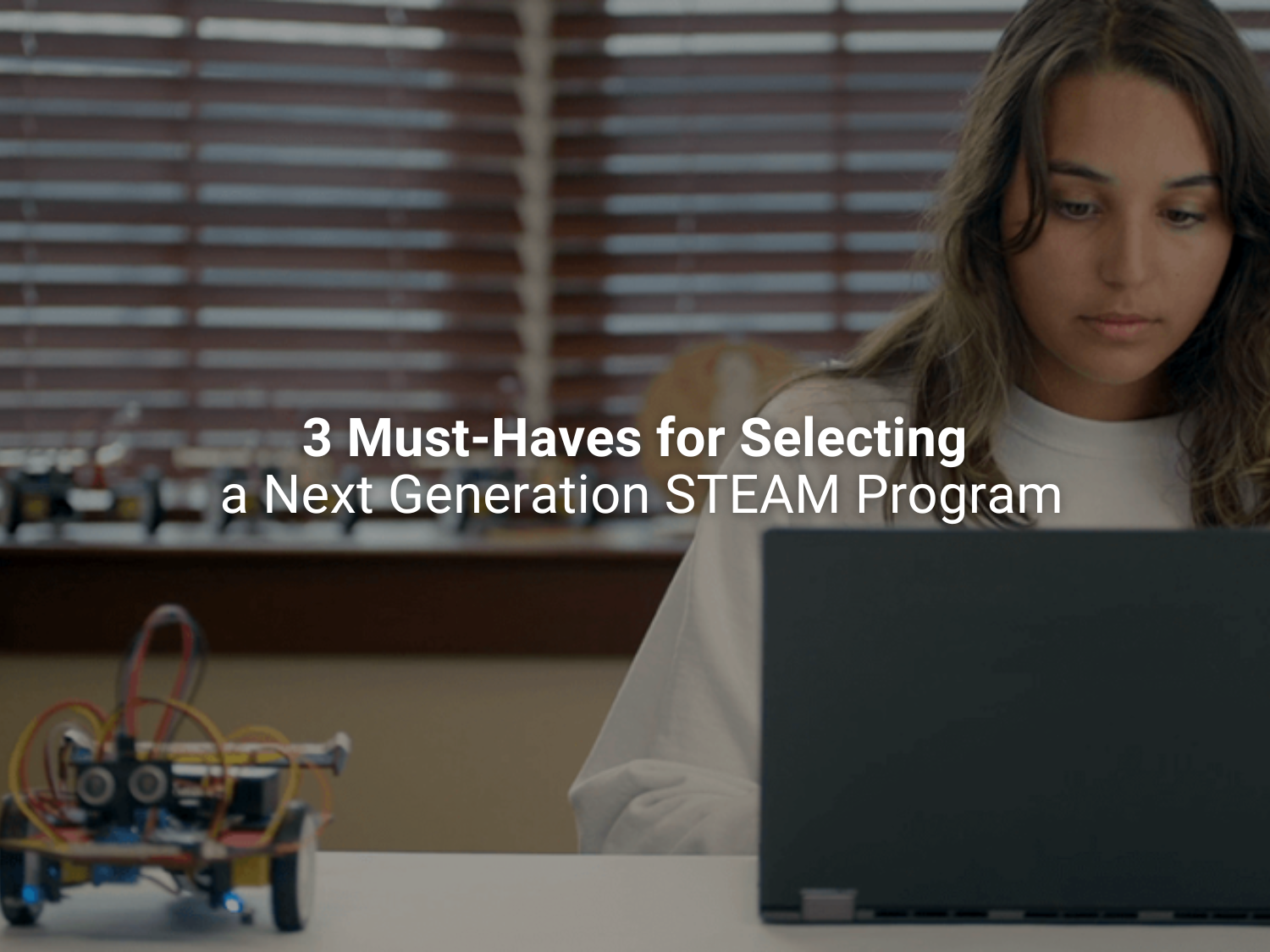Guide to setting up an electrifying Afterschool STEAM program
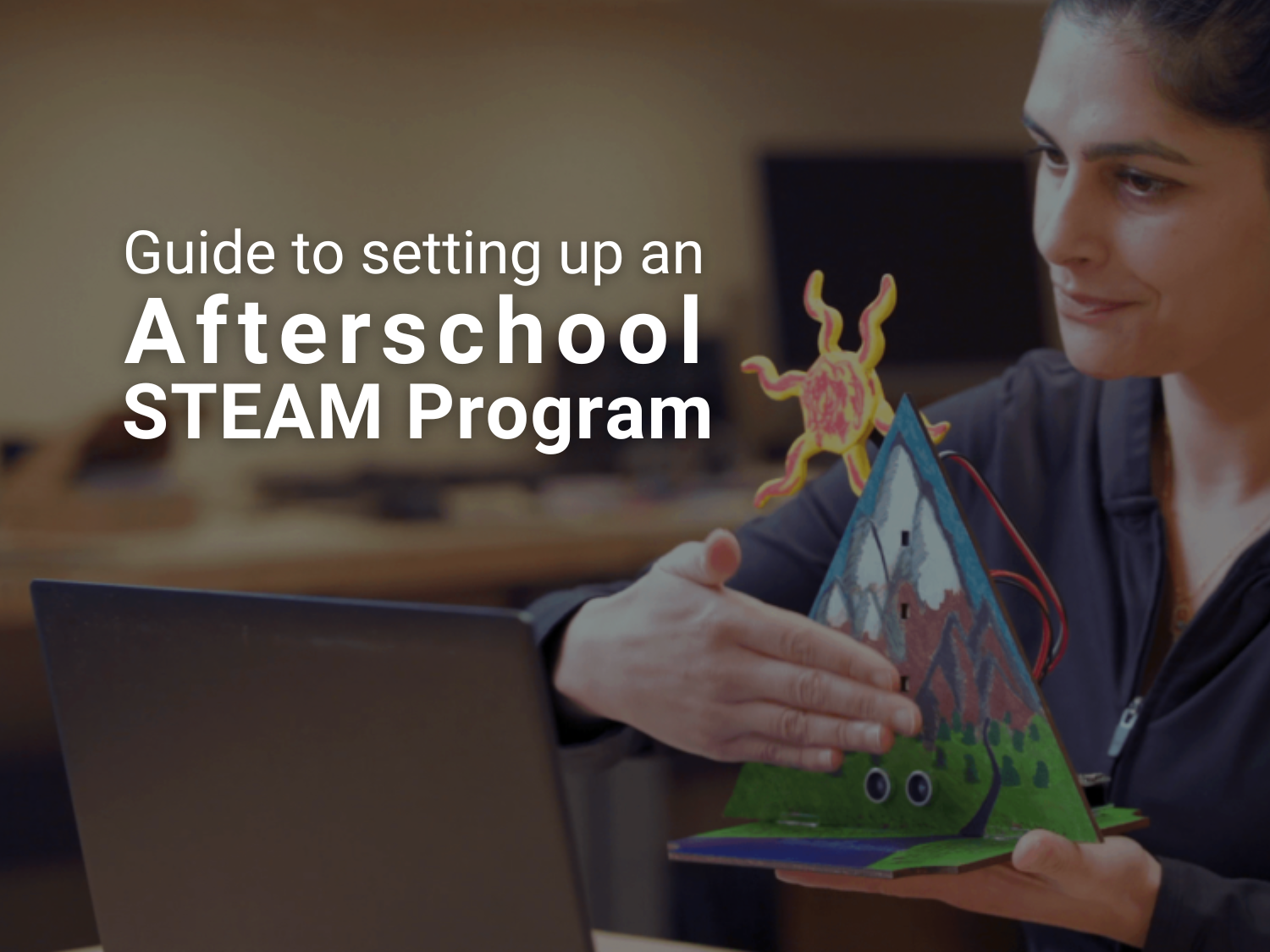
Nearly 10.2 million children in the U.S. participate in afterschool and expanded learning programs according to data from youth.gov. That large swath of the student population uses time in afterschool programs to learn new skills, socialize with their peers, and engage with their passions.
Throughout the past five years, STEAM has become an increasingly popular category for afterschool and expanded learning programs. That is probably due to the fact that STEAM education has numerous proven benefits to young students! For example, a recent analysis of 160 afterschool STEM programs across 11 states found that among the nearly 1,600 participating students, 80% made positive gains in science knowledge, and 78% had an increased interest in STEM.
In this article, we will explain the benefits of STEAM afterschool programs and offer practical advice on how to establish one of these programs in your school!
Benefits of STEAM Afterschool Programs
#1 STEAM programs help students develop 21st century skills like:
- problem-solving
- collaboration
- critical thinking
- resilience
- productive failure
Specifically, STEAM Project-based learning provides students a chance to learn and sharpen each of these skills. By watching their peers work through problems, brainstorm solutions, and learn from failure, students discover innovative ways to approach problems as a team.
#2 STEAM education deepens the impact of core instruction through hands-on experiential learning.
Many students need to see concepts in a real world setting to understand their relevance. STEAM programs provide an opportunity for students to further engage with the topics they are introduced to in their classroom curriculum. It also gives them the opportunity to practice and apply what they have learned.
#3 Afterschool programs make STEAM learning more accessible.
One of the biggest perks to educators is that the stakes are often lower for an afterschool STEAM program. This format offers a good opportunity to test out STEAM projects to eventually use in the classroom. After all, it can be intimidating to change a curriculum. Give new STEAM projects a test-run with an afterschool program. NO need to change your class routines yet! Use this as an opportunity to train yourself and other educators on how to teach STEAM lessons outside of the busy school year. Test out STEAM Project-Based learning with our reusable Classroom Trial Packages!
Beyond being accessible to educators, STEAM education is accessible to students. There are so many STEAM projects that can be completed using cheap and recycled materials. Try our makerspace library TinkRpedia to get started on STEAM Project-based learning. Many of these projects utilize recycled materials. Get started for free, today!
#4 It's fun!
There’s nothing better than an engaging project-based curriculum to get students excited about learning outside of the normal classroom schedule. Afterschool STEAM programs entice students to activate and stretch their STEAM knowledge. They can also awaken a true passion for STEAM concepts that can turn into a career later in life.
Are you ready to jumpstart a STEAM afterschool or expanded learning program at your school but not sure where to start? Check out our Creating a Highly Successful STEAM PBL Program Checklist.
Important Elements of an Afterschool STEAM Program
.png?width=643&height=643&name=TinkRworks%20Effective%20Teamwork%20Social%20Square%20(4).png)
Now that you’re convinced that an afterschool STEAM program will benefit your students, you need to consider some questions as you prepare to launch your program. Here are some questions to ask yourself as you’re setting up your afterschool STEAM program.
- Does my program allow for productive failure?
Learning that there isn’t always just ONE way to solve a problem is an important lesson for student-development. In life, there are often many paths to a solution. Sometimes, the path that you spend lots of time going toward doesn’t work in the end. It’s essential for a good STEAM program to encourage students to creatively and courageously approach problems. They should not fear failure, because it is an opportunity for them to learn!
- Is the material relevant to students?
A successful STEAM program provides students an opportunity to learn new science, technology, engineering, art, and mathematics skills. When these STEAM concepts are relatable to students, the potential for learning is even greater. Students can connect with material better when they have real-world knowledge of it. This real-world knowledge can connect projects and exercises to phenomena in their lives outside of the classroom.
At TinkRworks, our STEAM projects are created and designed with a focus on real-world problems and difficult questions. This structure both challenges and excites students to solve problems that relate directly to their lives. See for yourself! Try our reusable classroom trial packages and use it for up to 90 students in your afterschool STEAM program next semester.
- Does your afterschool STEAM program encourage problem-solving?
A productive STEAM program encourages students to approach problems and challenges with creativity, innovation, and collaboration to find their own solutions. The goal is not to simply check off tasks from a list or rubric. Instead, students should practice creative problem-solving skills that can serve them throughout their academic lives.
- Does the program strengthen teamwork skills in students?
The ability to collaborate productively with a team is a skill that any member of the 21st century workforce will need. Whether or not your students go on to work in a STEAM field, this aspect of STEAM education will benefit them in the future. A robust STEAM program will provide students with opportunities to work together collaboratively. This ultimately teaches them the importance of approaching problems from multiple perspectives, and utilizing the skillsets of others to find solutions.
- Is the program rigorous enough?
Research shows that a genuinely rigorous curriculum combines three crucial elements.
- A strong conceptual understanding of the lesson content
- Procedural skill and fluency
- Opportunities to apply the scientific method to solve problems
At TinkRworks , our STEAM projects are designed with these three core standards of rigor in mind. We believe that persevering through rigorous lessons is the key to every child learning STEAM competency. TinkRworks’ projects not only task students with applying the scientific method to solve problems and teach them procedural skill and fluency, but they also reinforce core content knowledge in the fields of ELA, art, coding, math, design, science, engineering, and data analysis.
Implementing an Afterschool STEAM Program
Now you’re ready to try out an afterschool STEAM PBL program! The next step is to ensure that you have systems in place to help educators in your school find success.
STEP 1: Identify Your Learning Goal
- What do you want students to learn in your afterschool program?
- What key learning targets or content standards do you want students to cover?
Once you know these answers, you can decide on the best type of STEAM project for you and your school’s needs.
STEP 2: Choose a STEAM project
While there are plenty of options available to you, we’d like to suggest the projects we’ve created at TinkRworks! For a well-designed and easy-to-implement STEAM project, check out Art Electric or LaunchPad.
STEP 3: Provide Professional Development
Getting your afterschool STEAM program started with TinkRworks is easy as can be! Facilitators of an afterschool program don’t need to be STEAM or coding experts themselves. We provide all the resources needed for a successful implementation. For more help, check out our professional development kit!
STEP 4: Launch, teach, collaborate, and celebrate
A TinkRworks project can fit easily into an afterschool program! With only 10 to 15 instructional hours per project, it’s easy for educators to work STEAM into their unique afterschool STEAM programs.
STEP 5: Establish a STEAM Culture in Your School
Leverage your STEAM afterschool experience. Find opportunities for the students in your STEAM afterschool program to share what they’ve learned with their classmates during your time together.
- Develop a STEAM showcase to help build an environment where students want to think and act like scientists, engineers, and innovators.
- Use our STEAM Superheroes Classroom Kit to get your students thinking like STEAM engineers!
In Conclusion
You’re all set! Now you can confidently implement an afterschool or expanded learning program that helps students discover the fun in STEAM learning. Even better, you can use this program to explore and test-run potential projects for students to use in the classroom during the normal school day. Use our reusable Classroom Trial Packages to kick things off for your program.
Get ready to watch students make significant learning gains, collaborate with one another, and find an undiscovered passion for STEAM!
-1.png?width=350&height=89&name=TinkRworks%20Logo_Learners%20to%20Innovators%20V2%20(1)-1.png)
.png?width=643&height=643&name=TinkRworks%20Effective%20Teamwork%20Social%20Square%20(3).png)
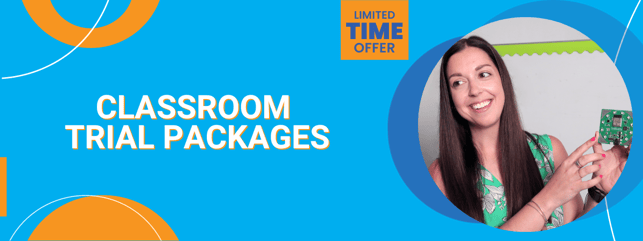

.png?width=643&height=241&name=TinkRworks_%20Blog_Images_Afterschool_STEAM_Program_Guide%20(1).png)

